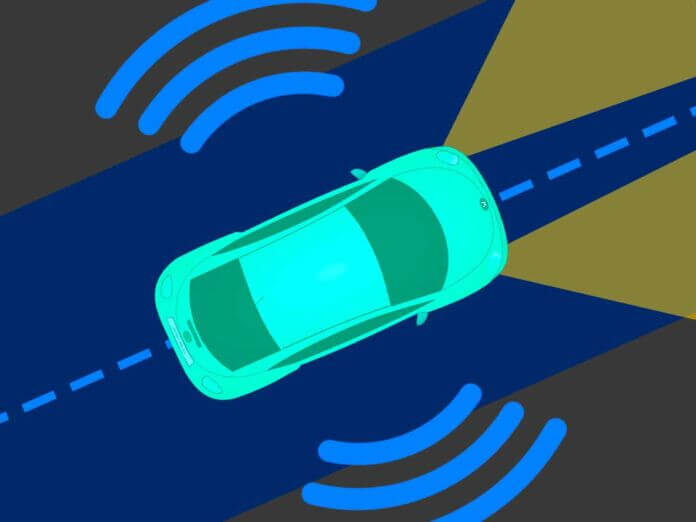
Data provides the insights that make IoT systems valuable. But where does that data come from? It starts with the IoT device, which captures information about the world through sensors—and your choice of sensing technology helps to determine the strengths and limits of your IoT deployment as a whole.
Smart homes, facilities, healthcare operations, and cities typically use IoT to measure common conditions, such as:
- Motion
- Human presence
- Temperature
- Proximity between objects
- Environmental changes
Multiple sensing technologies provide accurate data about one or more of these conditions. These technologies include:
- Visible Imaging (i.e., Camera)
- Ultrasonic
- Infrared
- Millimeter Wave Radar
(That last item requires a little clarification: When we discuss millimeter wave radar in this article, we’re referring specifically to 60 GHz mmWave radar sensors, which provide higher sensitivity than the older 24 GHz models—and are considered industrial-grade, suitable for highly precise industrial IoT.)
At any rate, the variety of sensor technology leads to a key question for IoT solution providers and decision-makers in the retail, healthcare, facilities management, and logistics industries: Which sensing technology will provide the most accurate, reliable data in mission-critical IoT deployments?
No matter what you need from an IoT system, one (or more) of these technologies will provide ideal sensing capability. You just need to choose the right one. Keep reading to learn the benefits, limitations, and common use cases for each of these four leading IoT sensor technologies—and choose the best match for your next IoT deployment.
Comparing IoT Sensors: Camera, Ultrasonic, Infrared, and Millimeter Wave Radar
Each of the four sensing technologies we discuss has a unique set of strengths and weaknesses. The most appropriate sensor will depend entirely on your project’s unique circumstances. That said, we’ll ultimately recommend millimeter wave radar as the most advantageous sensing technology for most IoT deployments.
Our technology comparison will help to illustrate why. Here are the basic facts about camera, ultrasonic, infrared, and millimeter wave radar sensors in IoT systems:
| Sensing Technology | How It Works | Strengths | Limitations | Best For |
| Camera | Converts light into digital signals | High resolution imaging Supports facial recognition Ideal for image analysis | Requires suitable lighting Can create privacy issues | Security, surveillance, and object tracking IoT |
| Ultrasonic | Senses objects by measuring rebounding high-frequency sound waves | Detects most solid or liquid materials Functions in low or no light Lower cost | Accuracy decreases with range Subject to interference from air temperature, humidity, or vibration | Proximity sensing (as in parking assistance); measuring liquid levels |
| Infrared | Detects infrared radiation to sense objects and temperatures | Does not require light Measures temperature Lowest cost | Limited range Sensitive to temperature Subject to failure in high heat | Sensing temperature; detecting the presence of people, objects, or both |
| Millimeter Wave Radar | Analyzes reflected radio waves in the millimeter wave spectrum (1 to 10 mm wavelength) | Highest accuracy Resists weather interference Senses through walls and obstacles | Limited resolution for smaller objects Higher cost and complexity | Sensing people and objects; automotive IoT; industrial automation; perimeter security |
As you can see, millimeter wave radar—often abbreviated mmWave—provides a particularly strong feature set for many IoT use cases.
A Closer Look at Millimeter Wave Radar Sensors in IoT
Compared to the other sensing technologies on our list, mmWave offers more stable performance, over longer distances, with less interference from environmental conditions.
For example, mmWave radar performs well in foggy, smoky, and dusty conditions. It returns accurate measurements indoors and out, in all kinds of weather. Because mmWave doesn’t operate on the visible light spectrum, it preserves privacy better than camera-based sensors.
The hardware required for millimeter wave radar is also lighter and smaller than competing technologies, making it easier to work into any form factor—or install anywhere in your facility. This combination of advantages makes mmWave radar ideal for use cases that require precise measurements with highly dependable performance, including:
1. Detecting human presence.
Accurate detection of people (and their locations) provides strong benefits in IoT security systems. Millimeter wave radar can sense motion through walls and objects, making it ideal for monitoring sensitive places like transportation hubs, construction sites, and industrial facilities. This makes mmWave radar helpful in security and surveillance IoT.
2. Counting people.
The high precision of mmWave radar provides accurate counts for any designated object—including people. That allows building operators to identify high-traffic areas, which can help optimize staffing, measure attendance, predict maintenance and janitorial needs, and more. This makes mmWave radar ideal for smart building technologies.
3. Gesture recognition.
A mmWave sensor can improve the accuracy of smart home automation, such as lighting and environmental controls that activate when someone enters the room. This technology is also sensitive enough to recognize precise movements. That opens up new smart home capabilities like gesture-based controls.
These three examples are far from comprehensive. Because of their highly precise measurements, millimeter wave radar sensors are also ideal for healthcare IoT systems. More use cases will become apparent as IoT designers continue to innovate.
As always, the “best” IoT sensor technology will depend on the project. You may get more benefits from ultrasonic or infrared sensors. If you need to capture images, cameras will be the best choice. For most IoT deployments, however, the latest millimeter wave radar technology will provide the best combination of accuracy, reliability, and ease of deployment.
Tweet
Share
Share
- Hardware Components
- Sensors
- Hardware Components
- Sensors
